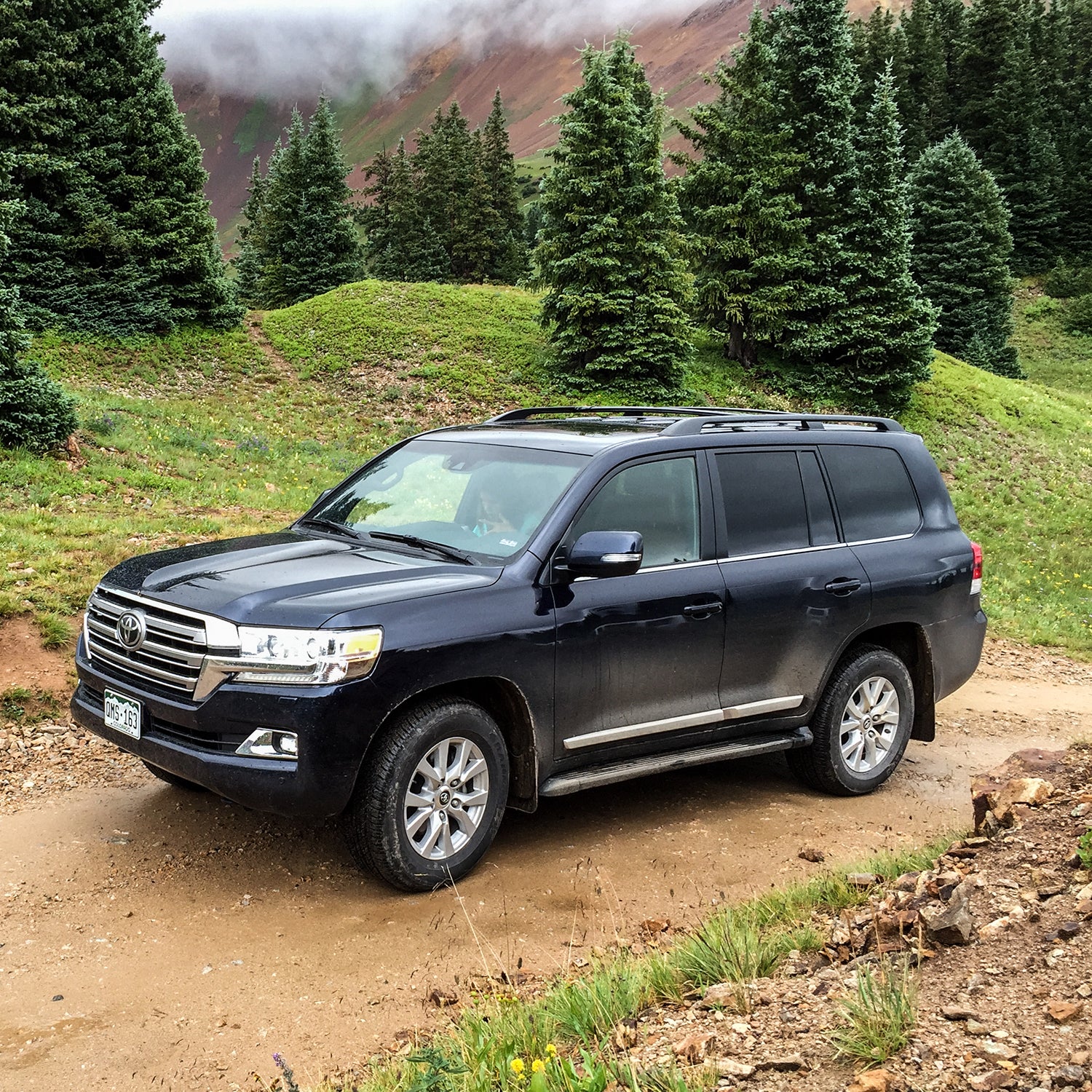A very small percentage of people will actually want this version of the Land Cruiser. Here’s why.
The Takeaway
The Good: After clocking 950 miles and traveling over nine high-altitude mountain passes (on and off-road) during a car-camping road trip from Denver to Mesa Verde National Park, we aren’t surprised the Land Cruiser is the go-to choice for NGOs, governments, and global companies doing business in Africa, the Middle East, South America, and regions where smooth roads are few and far between. The Land Cruiser is a reliable, rock-solid, go-anywhere, pull-most-anything beast.
The Bad: At almost two tons, it’s not nimble. And its gas-guzzling V8 engine puts up atrocious numbers in city and suburban traffic (12 to 13 mpg). Our model was packed with a lot of superfluous gadgets (like a DVD player and LCD screen in the second row) that only drove up the price.
The Verdict: If you can afford $90,000, tax and license included, plan on driving it for 20 years both on and off-road, and if you like all the creature comforts you can buy, this eight-passenger Land Cruiser is a solid bet. It will take you anywhere and should run for hundreds of thousands of trouble-free miles. If you don’t meet all that criteria (and few of us do), look elsewhere.
Specs
�ʰ�������:��$84,820 (base, as tested)
E�Բ����Ա�:��5.7-liter V8
‸���������ٰ�������:��8-speed automatic; 4WD with 4WD-Low
Fuel Economy: 13 mpg combined; 18 mpg city/15 mpg highway; 18.6 mpg observed
The Engine
A 381-horsepower gas engine with full-time 4WD powers this giant rig. That’s plenty to pull the Land Cruiser out of deep sand and mud and up mountains—tire traction permitting—or pull a trailer weighing up to 8,100 pounds. On the highway, all that power translates into a smooth cruise at 80 miles per hour. On our trip, we saw fuel economy top 19 mpg while rolling along two-lane highways between Durango and Crested Butte at 65 mph.
During an off-road jaunt over the 11,250-foot Paradise Divide above Crested Butte, we put the Toyota into 4WD-low, using the low gears for torque on the climb and to slow our speed when rolling downhill. We also took advantage of the Multi-Terrain Select dial, choosing the mud/sand setting to reset the traction control and automatic transmission to best suit the terrain. It was here that we finally felt like the Land Cruiser was in its natural habitat: fording creeks and crawling over rocks, deep gravel, and mud. It was also here where our gripes about the sticker price melted away.
The Ride
With a rigid, body-on-frame construction (think pickup truck), the Land Cruiser is built for abuse and longevity, not comfort. Still, thanks to its heft and supportive front seats, it drives relatively smooth. Off-road, those features lessen the jolts and jarring one would experience in a stiffer and lighter vehicle like a Tacoma pickup. Nine inches of ground clearance and a relatively clean underbody mean you can take the Land Cruiser into rocky and uneven terrain. (For comparison, a Jeep Wrangler’s ground clearance is 8.3 inches.) The commanding view from the front seats is also a welcome throwback to the days before auto designers started squashing front window height for the sake of a sleeker design.
Cargo
With the seats folded down, there isn’t nearly as much floor space as we’d like. Latches, sloping floors, and hinges also muck up the surface area, so it’s hard to stack your gear neatly. There is, however, a lot of vertical space. I was able to stand a bike in the rear with the front wheel removed. Another inexplicable problem in today’s world of gadget-packed vehicles: the Land Cruiser has only one USB port for charging.
The Big Picture
We get a raw deal in the United States when it comes to the Land Cruiser, because Toyota offers only the ultrapremium version packed with expensive gadgets we don’t need. The company already sells a Lexus version of the Land Cruiser here in the States; we think that should be the go-to for anyone who wants 4WD and DVD players in the same car.
What we’d really like to see is Toyota offer a bare-bones and middle-tier version of the Land Cruiser that offers dependability and toughness and a more digestible price tag.


